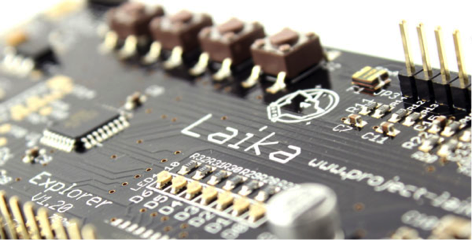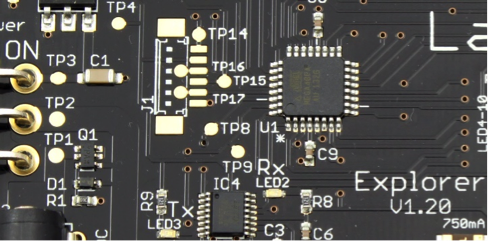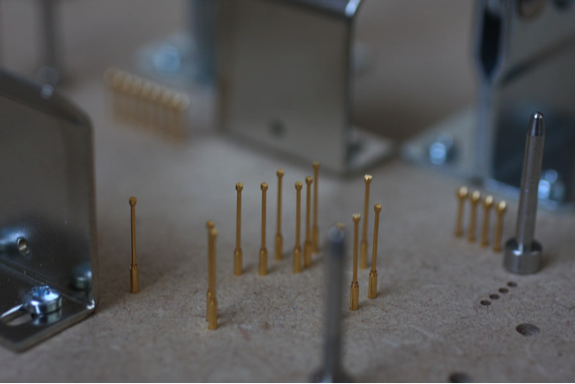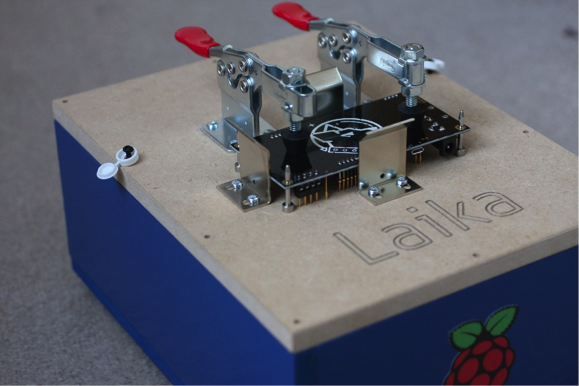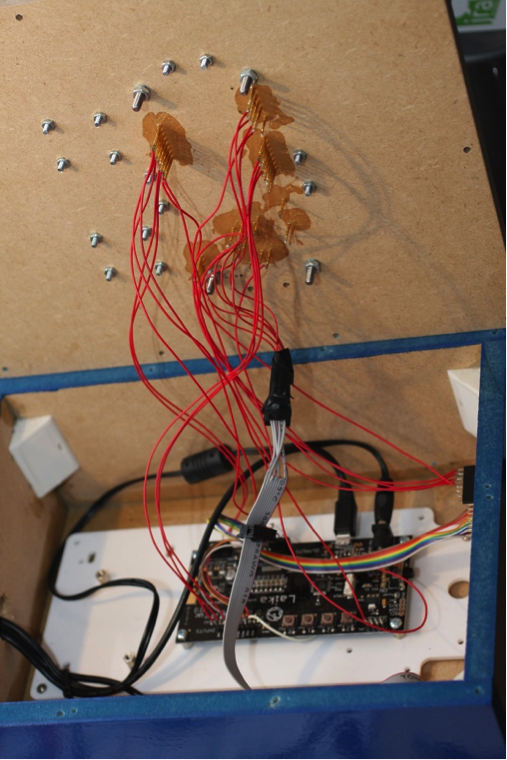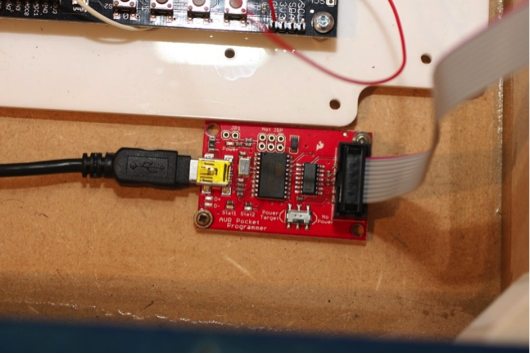|
Amazon is poised to release a new P2P cloud based payment system that seeks to compete against Square and Paypal. The Kindle Checkout System will be powered by technology acquired by GoPago, which Amazon bought out last year. The essence of the Kindle Checkout system is to allow vendors to take orders or scan credit cards to make purchases. Retail locations is still where 90% of all commerce is conducted and Amazon will supply everyone with Kindle Fire tablets with a build in credit card and debit scanner. The Wall Street Journal mentions that “Amazon also might seek to create a so-called mobile wallet with stored credit-card information to help speed payments. The company last year rolled out a one-click digital button for processing online and mobile payments on other retailers’ websites using Amazon customers’ credit cards.” The Amazon development of a new payment system comes at a time where Apple is actively creating their own solution. They basically want to bill peoples iTunes account directly via a customers ID number. Since Apple is the leading phone by a wide margin in North America, hooking up retailers with the ability to just bill people. How will Apple handle this? iBeacon technology has been garnering a ton of news lately, that first hit the scene with iOS 7. It uses Bluetooth Low Energy to create proximity based networks that can detect the physical presence of a phone in a store or at the register. It also included fingerprint ID in the iPhone 5s, which could be used to authenticate a customer – not just his or her device – is present to authorize a sale. Amazon to Compete with PayPal and Apple with new Kindle Checkout System is a post from: E-Reader News |
A Semi-automated Technology Roundup Provided by Linebaugh Public Library IT Staff | techblog.linebaugh.org
Wednesday, January 29, 2014
Amazon to Compete with PayPal and Apple with new Kindle Checkout System
Samsung Rumored to Launch AMOLED Tablet at MWC 2014
|
Samsung is reported to have initiated mass production of 8 and 10.5 inch AMOLED displays which have led analysts to believe the South Korean company might be prepping AMOLED display based tablet devices for a launch sometime in the near future. Further, with an event as big as the MWC, it would perhaps be safe to conclude we might be treated with working samples of the same during the event in February. Samsung can be associated with AMOLED displays for long though that applies to smartphone devices only. Samsung also had a Galaxy Tab version, one with a 7.7 inch AMOLED display that did enthrall users with its brilliant display though unfortunately, it was among the Galaxy Tab versions that got banned as a fallout of the infamous court battle with Apple. However, there were no precedents ever since which was largely due to several technical difficulties in producing bigger AMOLED displays in sizeable numbers in a cost effective manner. However, that seems to have been taken care of effectively now that rumors of 8 and 10 inch sized tablets with AMOLED displays have begun to take center stage as we approach the MWC. The prestigious event unfolds in Spain from 24 – 27 February.
Samsung Rumored to Launch AMOLED Tablet at MWC 2014 is a post from: E-Reader News |
Lenovo Buys Motorola from Google for $2.91 Billion
|
Lenovo hopes to enter the ultra competitive North American market by agreeing to terms with Google for Motorola. The entire deal is the largest in Lenovo’s history and will cost them $2.91 billion dollars. The deal with Google is the second one in the last few weeks, as the Chinese company bought IBM’s low-end server business for $2.3 billion. Google originally bought Motorola in 2011 for a staggering 12.2 billion dollars. The main reason they did it was for the patents that had, which they will use to fight off companies trying to slam them with licensing fees. According to a Nomura analyst, Microsoft’s comprehensive Android licensing agreements with smartphone companies earned it nearly $2 billion this financial year. When this deal goes through, Lenovo will the 3rd largest handset manufacturer in the US. One of the big proponents of the deal is Motorola’s existing agreements with retailers and carriers, that instantly gives the Chinese manufacturer a broad reach into mobile markets all over the globe. They will also keep the existing executive team that is based out of Chicago and has publicly acknowledged their confidence. “The acquisition of such an iconic brand, innovative product portfolio and incredibly talented global team will immediately make Lenovo a strong global competitor in smartphones. We will immediately have the opportunity to become a strong global player in the fast-growing mobile space," said Yang Yuanqing, chairman and CEO of Lenovo. "We are confident that we can bring together the best of both companies to deliver products customers will love and a strong, growing business. Lenovo has a proven track record of successfully embracing and strengthening great brands – as we did with IBM's Think brand – and smoothly and efficiently integrating companies around-the-world. I am confident we will be successful with this process, and that our companies will not only maintain our current momentum in the market, but also build a strong foundation for the future." Lenovo Buys Motorola from Google for $2.91 Billion is a post from: E-Reader News |
e-Reading Experience on the iPad Mini 2
|
Today Michael and Peter bring you the e-reading experience found on the iPad Mini with Retina. Often, Apple products make fairly solid eBook readers and you can get a sense on how the iBooks app works and get an overview of the bookstore. The iPad Mini with Retina has one of the highest resolution displays on the market and features a 8.9 inch screen. The extra real estate allows you to fit more text on the screen at any given time. The iBooks app doesn’t come pre-loaded on the iPad, but instead is one of the recommended installs when you fire up the App Store for the first time. The iBooks app and Apple Bookstore is the only ecosystem found on the iPad that allows you to buy books. Amazon, Kobo, Sony, B&N and hundreds of other retailers do not allow you buy books via their apps. This is attributed to the mandatory percentage Apple takes off the top, out of any in-app purchase. Can you imagine how much extra revenue they would glean if Amazon had to give them 30% of each book purchased? If you are looking to utilize the second generation iPad Mini as an e-reader to read fiction or non-fiction novels, this video will help decide if it ideal for your circumstances.
e-Reading Experience on the iPad Mini 2 is a post from: E-Reader News |
BlackBerry 10.2.1 Update Allows you to Install APK Files on your Phone
|
Blackberry has just initiated a global rollout of their new 10.2.1 update for the Blackberry Z10, Q10, Q5 AND Z30. The most exciting new element of said update, is the ability to load in Android Apps (APK Files) directly on your phone, without the need of bulky, cumbersome software. Over a year ago, Blackberry unveiled its latest operating system for smartphones, which was quite different then any of their previous offerings. One of the more captivating features was the Android Emulator, that allowed developers to port over their Android apps from the APK to the BAR format. This was developed to make the Blackberry ecosystem more attractive for big time apps, like Skype, Whatsapp, Vine, Instagram and mainstream game titles. Sadly, the emulator only supported Gingerbread, which limited the ability to run modern titles. This has all changed with the advent of the 10.2.1 update. Users can now download and install APK Files using the web browser of your phone. Alternatively, you could download APK files from the internet, transfer them to your phone with the USB cable, and then click on the apps with your phones file browser to install them. I recommend you install the Good e-Reader App Store. The Good e-Reader APP Store client has been actively been developed for the last three years. In terms of market share, Good e-Reader is 5th in the world with over 140,000 Android Apps available to be downloaded, for free. Our intuitive home screen puts the priority on the best new apps, such as Flappy Bird, Tuned In, or Tekken Arena. We also have your quintessential ‘must installs’ with ES File Explorer, Vine, Instagram, Flash, and many more! In order to get started with the update, you need to click on your settings button and then click on Software Updates. The entire update should take around 30 minutes. Your phone will reboot after that and you are ready to install the Good e-Reader Android App Market on your Phone. Simply open up your phones web-browser and click on click on this link – http://bit.ly/1jKgpUB BlackBerry 10.2.1 Update Allows you to Install APK Files on your Phone is a post from: E-Reader News |
SelfPublishing Platforms Hit Hard by DIY Authors
|
As not only print and digital publishing opportunities grow for indie authors, distribution options have also grown. Where authors at one time did not have the benefit of retailers like Amazon and Kobo to sell their titles for them, it was the vanity presses who had to step in. Now that authors have tools at their disposal to produce and distribute their own content at the click of a mouse and with little to no upfront fees required, the companies formerly known as self-publishing options are falling by the wayside. An article in Publisher’s Weekly outlines the demise of one such company, WinePress Publishing, who unfortunately closed its doors amid accusations of ripping off authors and its own employees, including allegations that its CEO was brainwashed into selling what had been a multi-million dollar company to her church pastor for only $10. Over the years, WinePress Publishing has lashed back through lawsuits at people who have criticized its practices. Companies like Book Baby have taken the often-disparaged vanity press model and revitalized it into a legitimate tool for authors today. They’ve altered the business model to remove the additional royalties that vanity presses were notorious for collecting (above the upfront costs they charged), and given more control to authors. For entities like WinePress and the host of allegations that accompanied it, though, the time has come to be replaced with the current self-publishing model.
SelfPublishing Platforms Hit Hard by DIY Authors is a post from: E-Reader News |
Scribd Launches eBook Subscription Service For The Kindle Fire Tablet
|
Scribd has lined up a treat for owners of the Kindle Fire range of tablet devices; the company’s online ebook subscription service which has now been extended to include to the Kindle Fire tablets. This has been made possible via an app that was launched on Wednesday and will offer unlimited ebook downloads for the same $9 a month as it offers for other Android and iOS devices. The above move does make a lot of sense considering the Kindle Fire range are oriented more towards reading books (along with other Amazon services such as it movies and music streaming services) and having a presence here means a head start right away for Scribd. “Since launching our subscription book service, our readers around the world have been asking for an app that worked with Kindle Fire,” said Trip Adler, CEO and cofounder of Scribd. “It's one of the most popular reading devices available today and we want to enable our readers to enjoy Scribd across any of their devices.” However, those eager to try out the Scribd service will have to avail of the app directly from the company site as the same isn’t listed at the Amazon app store for Kindle Fire tablets. Further, with an agreement with only one major publisher – HarperCollins – Scribd for sure will not have as wide a choice so far as ebooks are concerned.
Scribd Launches eBook Subscription Service For The Kindle Fire Tablet is a post from: E-Reader News |
Samsung Announces Galaxy Tab Version For Google Play For Education Program
|
Samsung is prepping a Galaxy Tab version to be used almost entirely for educational purpose. The announcement was made at the FEC 2014 event and will be aimed at students in the K12 level. The launch of the tablet is in line with the Google Play for Education program that so far includes the Nexus 7, ASUS Transformer Pad, and the HP Slate 8 Pro devices. The 10.1 inch Galaxy Tab will be the newest addition to the list and will be made available in April, that is before the 2014-15 academic year commences. The Samsung tablet will also be the second choice in the 10 inch category for students to consider, the other being the Transformer Pad. However, with the device essentially being the Galaxy Tab 3, the biggest change will be with the software which has been tweaked enough to allow for a simple setup process and device management along with ease of 'access to curated educational content, and other features to support dynamic, digital teaching and learning', the press release revealed. Onboard will be the latest Android 4.4 KitKat version, something that regular users of the tablet too will be all too eager to have on their devices. However, the company is yet to reveal the price of the tablet which will be made available only to schools and in bulk.
Samsung Announces Galaxy Tab Version For Google Play For Education Program is a post from: E-Reader News |
The updated, improved Test Drive
| Has it been a while since you last took a look at OverDrive's Test Drive program? If so, then it might be worth taking another look. We've been updating the website, adding new devices and archiving ones that are hard to find. For those of you that may be unfamiliar (or didn't read Justin's post from the 10th), Test Drive is a program for libraries and schools that provides resources for device lending. If you follow the guidelines for our Test Drive devices, you can safely lend tablets that your patrons and students can use to borrow and enjoy titles from your OverDrive digital collection. We carefully test and review each gadget on our list to make sure it's of good quality and makes sense as a lendable device. Here are the newest Test Drive Approved devices:
I'll be posting a review of the Tegra Note 7 (one of my favorites out of the new devices) soon, so be on the lookout. On top of the new tablets, we're working on making the Test Drive website better and easier to navigate, so please keep checking back for updates. In the meantime, if you have questions or feedback about the program, post in the comments below. Quinton Lawman is a Technical Writer at OverDrive. |
URL: http://feedproxy.google.com/~r/OverdrivesDigitalLibraryBlog/~3/dFWaugMX_IM/
Daily Deals & Freebies – January 29
| News and Deals $30 off tablets $149 and up at Staples with coupon code 50053 How the ‘Netflix of books’ won over the publishing industry (Q&A) – Oyster has grown its library of books available to its all-you-can-eat subscribers to more than 100,000 titles. CEO Eric Stromberg told CNET how it happened, and how the […] |
URL: http://feeds.the-ebook-reader.com/~r/feedburner/cmWU/~3/t8fBx4rcYb8/
Laika Explorer: what it’s like to build a Raspberry Pi accessory startup
| A lot of companies are building Raspberry Pi add-ons – Raspberry Pi accessory businesses have been called out by the UK Telegraph this year as one of their top 2014 startup investments. It gives us enormous pleasure to watch people build jobs and businesses around the Raspberry Pi, and we watch the numerous companies which add to the ecosystem with great interest. Laika Explorer was a successful Kickstarter last year, which promised a powerful robotics controller for the Pi, controlled with Scratch or Python. Last week I had mail from Andy Bakin, who has allowed us to share how he’s expanding production – and how he’s using a Raspberry Pi as part of his test rig (something we’re seeing an increasing number of factories doing; even the factory that builds Raspberry Pis tests them using a Pi now). Over to Andy! Testing Times I am pleased to say that the Laika Explorer is moving into its second production run: this time we are making 1000 units. This is great news but as production volumes ramp up, the efficiency of manufacturing has to increase. The first 500 units were individually inspected, programmed, and tested by hand. This took a long time and used up a fair share of my Sunday evenings when I should have been resting, sipping a glass of red and catching an episode of Breaking Bad in preparation for the week ahead. And so the need for a production tester is a priority as I move towards receiving that box of 1000 Explorers. Now I have made quite a few production test jigs in the past when moving previous designs into manufacture. They have always been custom builds with the test program running as firmware on a bespoke PCB. This is fine if the product is stable and is not set to change much. It is also fine if you do not plan to release many new designs which will each require their own specific test equipment. The nice thing about this approach is that the test equipment can be neatly self-contained in a box, stored easily and grabbed off the shelf when needed. The problem arises when the product being tested has new functionality which needs testing and therefore requires the test jig program to be updated. Not a huge issue but it does require getting to the test jig and 'flashing' the new firmware to incorporate new test routines. There are concerns from a hardware point of view too as most of the test jigs I have made use a customised PCB of some kind which makes it hard to quickly put together another jig if you want to double your testing capacity. Now, the Explorer is the first in what will be a range of products all designed to work together. Up to 32 different modules will be made, which means that I need a test set-up that can easily be replicated, updated and switched between designs depending on which one is coming off the production line. I also want to be able to get remote access to the test equipment, which will be used at the manufacturers, so I can update and add test routines from the convenience of my office and keep an eye on the pass/fail rate to quickly respond to any problems. Let's Get Jiggy With It! The solution is to run the test software on a networked Raspberry Pi connected to a Laika Explorer which is housed inside a test fixture. The test fixture and test software is unique to each design as electrical connections have to be made to the PCB test points, and, of course, the test algorithm will be different for each device being tested. As the Laika uses USB it will be easy to swap the test jig hardware when a different product needs testing. The test program can very easily be selected using the software. Probe-ably For The Best We begin with a PCB design, in this case done in Eagle, which is used to create a .dxf file (this is an industrial format for use by CNC milling machines) containing the different layers of the board. The dxf file was then opened in a CAD program and a new layer created which would be used by the CNC machine to drill holes in a piece of 12mm MDF perfectly in line with the test points on the PCB. Here are some of the test points on the Explorer labelled TP1, TP2 etc.
The Hardware Here is the Explorer in place on the jig:
I have taken the decision to program firmware on the Explorer as they come off the production line. The alternative is to have them programmed before being placed on the board but that means it is more difficult to update the firmware if I need to. After a period of time I may decide that the firmware is not going to change and move to this method of programming as it might be quicker, but for now I like the flexibility of post-production programming, and it's pretty quick any way. To program these devices I have used an AVRDUDE connected directly to the RPi:
This is the best part of this project as the result is a simple graphical user interface which anyone can use to program and test a PCB. All the user has to do is click 'RUN' and the Python script uses the AVRDUDE to program the Explorer's Atmel chip, and then check all functions of the device under test by reading in voltages. This was the purpose of this project: to create a 'red light/green light' tester which either indicates a 'pass' or a 'fail'. In the case of a fail, details will be given as to the error found and the information logged for record keeping, and downloading by me remotely. Two Explorers: One Pi To use an Explorer to effectively test another Explorer meant I had to add some functionality to the Laika drivers so that more than one board can be plugged into the Raspberry Pi without conflict, and be independently controlled. By giving the test jig Explorer a different USB device descriptor, I was able to write software which could differentiate the two Explorers on the same USB connection. This opens up the possibility of connecting many Explorers all on the same USB. GUI The GUI was designed in Glade and Gtk+3 was used to interface to Python. This is a great way of creating an event driven program to control the test jig. As Laika can easily be controlled through Python, it was quite straightforward to build the test jig software. It Came To Pass Hopefully most of the Explorers off the production line will pass these production tests without any issues, but inevitably there will be the odd one that doesn't for some reason. This is expected and target failure rates are typically around 1% for builds of this size. The important thing is to detect these failures and extract the problematic PCB from the batch. For low-cost designs being manufactured in millions as opposed to thousands, then testing in this way becomes far too time consuming and would probably cost more in time and labour than the product itself. In this case the production is so finely tuned that the failure rate becomes more like 0.1% and the fact that someone will occasionally receive a defective piece of electrical equipment is accepted- we've all been that 0.1% at some point I'm sure. |
Amazon Q4 2013 Profits Surge on Back of Strong Holiday Sales
|
Amazon reportedly posted another great fourth quarter, thanks to an increase in sales of Kindle range of tablet and e-readers, and increased membership in its subscription services such as the Prime membership. Amazon Web Services is another service from the Seattle-based company, and counts among its clients some major organizations such as NASA and the CIA. Analysts believe AWS added about $3 billion to Amazon’s coffers in 2013 and is poised to grow even bigger in 2014, as several large Chinese companies and government organizations are expected to start using the service. A robust performance from its traditional retail arm is believed to have contributed to the stellar performance from Amazon. Net revenue could stand at $26.06 billion, up 22.5 percent over the $21.27 billion that the company made in Q4 2012. Amazon is expected to reveal its financial status for the said period on Thursday (5 PM EST).
Amazon Q4 2013 Profits Surge on Back of Strong Holiday Sales is a post from: E-Reader News |









